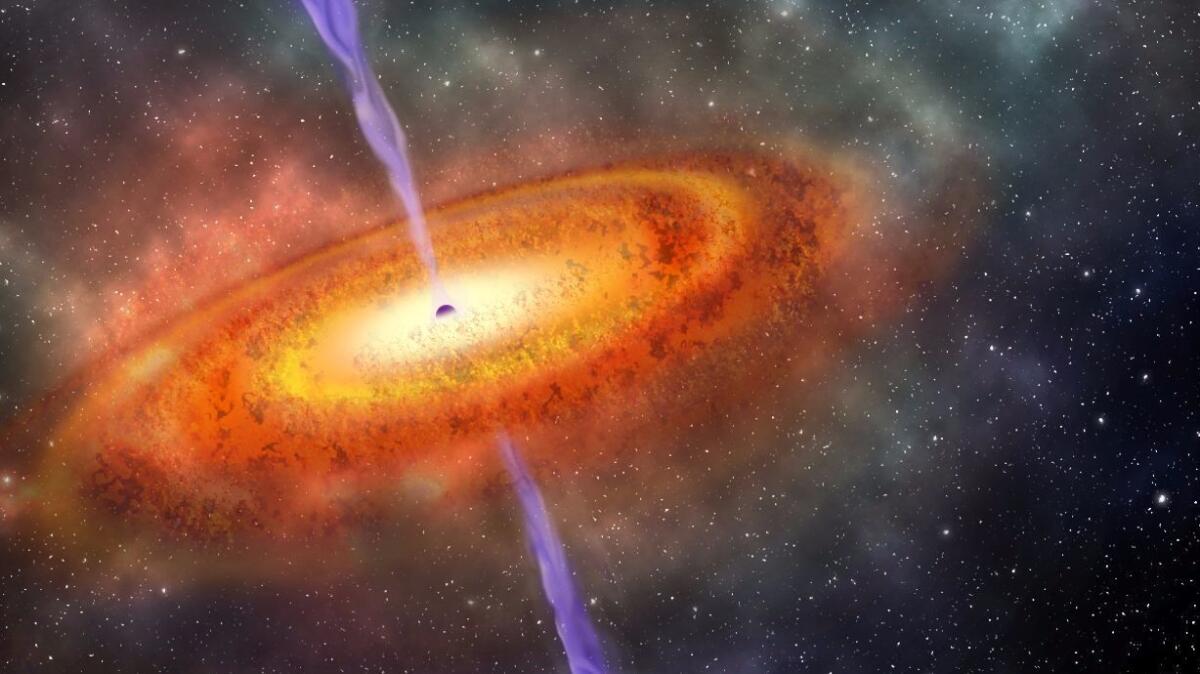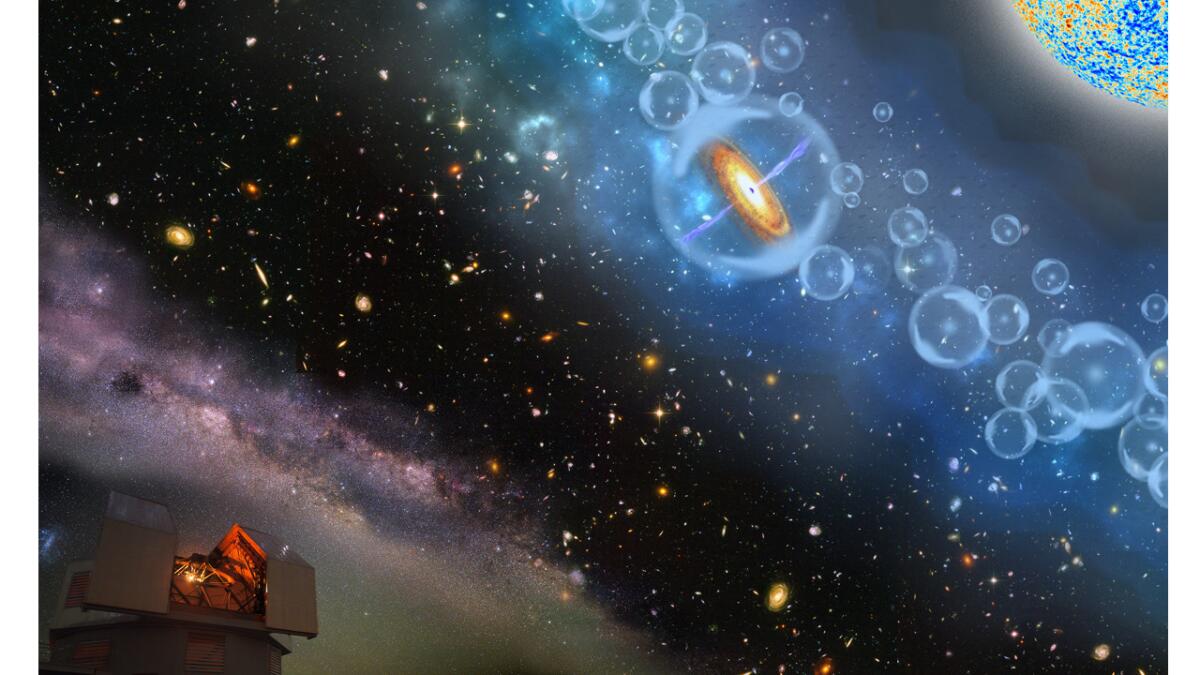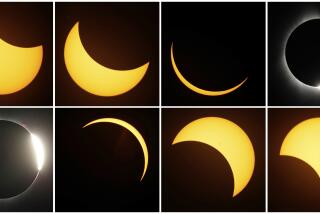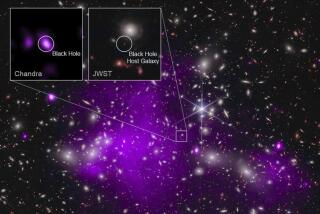Found: The oldest known supermassive black hole in the universe

Thanks to the beacon-like glare of a quasar, astronomers have discovered the most distant supermassive black hole they’ve ever seen, carrying the mass of a whopping 800 million suns.
The quasar J1342+0928, described in the journal Nature, sheds new light on a mysterious epoch near the dawn of the universe — and raises more questions about how such an enormous singularity could have formed just 690 million years after the Big Bang, when the universe was a mere 5% of its current age.
“Now that we are seeing it, we have to explain it,” said lead author Eduardo Bañados, an astrophysicist at the Observatories of the Carnegie Institution for Science in Pasadena. “And that is a big challenge for theorists right now.”
Quasars, also known as active galactic nuclei, are the brightest nontransient objects in the known universe. They’re thought to be caused by gas-guzzling supermassive black holes sitting at the heart of a galaxy and surrounded by a swirling accretion disk. As material in the disk falls toward the black hole, it rubs together and generates light, heat, X-rays — shining brightly at many different wavelengths.
Keep in mind, light takes time to get from its source to an object. It takes light from the sun about eight minutes to reach Earth, so when you look at the sun (which you obviously should not, unless you have proper protective gear) you’re actually seeing what it looked like eight minutes ago. The same principle applies to a star that lies billions of light-years away: A snapshot taken with a telescope shows the star as it looked billions of years ago.
Because quasars shine so brightly, we can potentially spot really distant ones. And the more distant a quasar is, the further back in time we are able to see.
That’s a pretty useful trick, given that much of the universe’s early history is literally shrouded in mystery. That’s because, around 380,000 years after the Big Bang occurred 13.8 billion years ago, protons and electrons in the universe cooled and recombined into neutral hydrogen, creating a soupy mix that was impenetrable to light — and thus, to many telescopes. This period is often called the dark ages. Eventually, the first stars coalesced out of all this gas and their light gradually reionized the universe, rendering it transparent again.
A quasar, bright as it is, could shed light on that pivotal period of reionization.

The problem is that quasars are pretty rare. Astronomers expect there to be around 20 to 100 quasars of similar brightness and distance as J1342+0928. That makes finding a distant quasar, whose light has been stretched into longer, redder wavelengths by the accelerating expansion of the universe, an even more difficult task.
To find such objects, an astronomer would have to sift through a haystack of data, looking for the glint of a cosmic needle. That’s exactly what Bañados and his colleagues did, using computers to sort through reams of public data sets in search of the reddened signature of a distant quasar. Finally, he found J1342+0928.
The scientists studied the hydrogen around the quasar and found that roughly half of it was still neutral and half of it had been ionized. That meant that the process of reionization, at least in this corner of the universe, was well underway at this point in time, Bañados said.
“We’re pinpointing … when this major transition of the universe happened,” he said.
From the beginning, J1342+0928 defied expectations. The black hole powering this quasar holds about 800 million suns’ worth of mass — even though it’s only had 690 million years to grow. That’s bafflingly fast, Bañados said.
“If this object was observed when the universe was 2 billion years old, I wouldn’t have been surprised,” he said. “That’s long enough to gather mass in many different ways. But if you have to do this so quickly, then there are not too many options.”
So far, though, this is just one quasar, and it’s hard to draw too many conclusions from a single object, he said.
The next step would be to search for more quasars around the same age as J1342+0928, if not older, to try to develop a “population study” of these powerful objects, Bañados said.
NASA’s James Webb Space Telescope, set to launch in 2019, would also help probe these early years in the universe’s history, he added.
Follow @aminawrite on Twitter for more science news and “like” Los Angeles Times Science & Health on Facebook.
MORE IN SCIENCE
Fires, droughts and hurricanes: What’s the link between climate change and natural disasters?
Eating for your health is also better for the environment, study shows
These 215 fossil pterosaur eggs are revealing new clues about these flying reptiles







